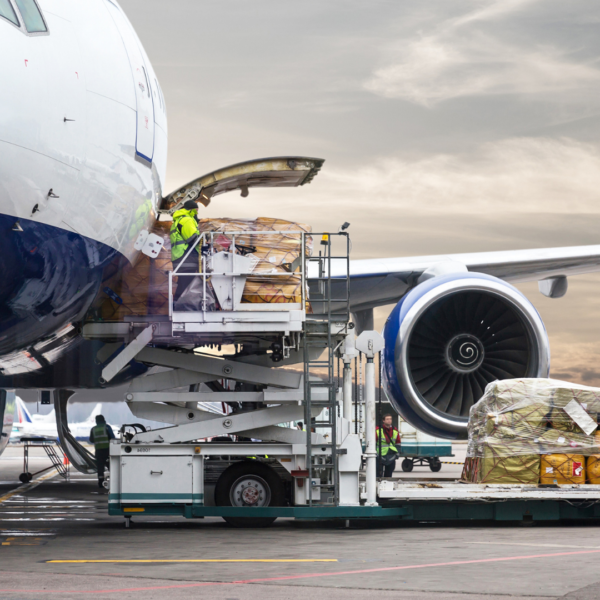Understanding Hazardous Materials (Hazmat)
Introduction
At Butterfly Training USA, we are committed to providing you with comprehensive information about hazardous materials (hazmat) to ensure safety and compliance. In this article, we will delve into the world of hazmat, explaining what it is, its classification, regulations, and best practices. Our goal is to equip you with the knowledge necessary to navigate hazmat handling with confidence.

What are Hazardous Materials (Hazmat)?
Hazardous materials, commonly referred to as hazmat, are substances or materials that pose a potential risk to human health, property, or the environment. These materials can be in various forms, including liquids, solids, gases, or even mixtures of substances. Hazmat can be found in everyday items such as cleaning products, fuel, batteries, and chemicals used in industries like manufacturing, construction, and transportation.
Classification of Hazmat
Hazmat materials are classified based on their inherent properties and the risks they present. The classification system ensures proper identification, handling, storage, and transportation of these materials. The U.S. Department of Transportation (DOT) and other regulatory bodies have established specific criteria for hazmat classification. Here are the main classes:
Class 1: Explosives
Explosives encompass a wide range of materials that can rapidly release energy in the form of an explosion. This class is further divided into divisions based on the severity and characteristics of the explosion.
Class 2: Gases
Gases are substances that exist in a gaseous state at standard temperature and pressure. They can be flammable, non-flammable, toxic, or corrosive. Examples include propane, oxygen, and chlorine.
Class 3: Flammable Liquids
Flammable liquids are liquids with a flashpoint below 100 degrees Fahrenheit (37.8 degrees Celsius). These substances can ignite easily under normal temperature conditions. Gasoline, ethanol, and diesel fuel fall into this category.
Class 4: Flammable Solids
Flammable solids are materials that can ignite and burn when exposed to an ignition source. Examples include matches, fireworks, and certain types of chemicals.
Class 5: Oxidizers and Organic Peroxides
Oxidizers are substances that provide oxygen to support combustion, while organic peroxides are compounds containing the peroxide group (-O-O-). These materials can enhance the combustion of other substances.
Class 6: Toxic Substances and Infectious Substances
Toxic substances are chemicals or mixtures that can cause harm to living organisms, including humans, through ingestion, inhalation, or contact. Infectious substances, on the other hand, contain pathogens such as bacteria or viruses.
Class 7: Radioactive Materials
Radioactive materials emit ionizing radiation, which can be harmful to living organisms and the environment. This class includes materials used in medical, industrial, and research applications.
Class 8: Corrosive Substances
Corrosive substances are materials that can cause damage or destruction to living tissues, metals, or other materials they come into contact with. Strong acids and bases are common examples.
Class 9: Miscellaneous Hazards
Class 9 encompasses hazmat materials that do not fall into the previous eight classes but still possess characteristics that warrant special precautions during handling and transportation. This class includes materials such as lithium batteries and magnetized materials.
Hazmat Regulations and Compliance
To ensure the safe handling, storage, and transportation of hazardous materials, several regulations and guidelines have been established by regulatory bodies such as the U.S. Department of Transportation (DOT) and the Federal Aviation Administration (FAA). Compliance with these regulations is crucial to protect human health, prevent accidents, and minimize environmental impact.
DOT Hazardous Materials Regulations (HMR)
The DOT HMR provides comprehensive guidelines for the transportation of hazardous materials within the United States. It covers various aspects, including packaging, labeling, placarding, shipping papers, training requirements, and emergency response procedures. Adhering to these regulations is vital for any individual or organization involved in the transportation of hazmat.
International Air Transport Association (IATA) Regulations
For hazmat transportation by air, the IATA regulations serve as a globally recognized framework. These regulations outline specific requirements for packaging, labeling, documentation, and handling procedures to ensure the safety of passengers, crew, and cargo during air transportation.
Occupational Safety and Health Administration (OSHA) Standards
OSHA sets standards and regulations to ensure the safety and health of workers in the workplace. Hazmat handling and storage within facilities are subject to OSHA regulations, which cover areas such as hazard communication, personal protective equipment, and emergency response planning.
Best Practices for Hazmat Handling
Handling hazardous materials demands utmost care and adherence to best practices to minimize risks. Here are some essential guidelines to follow:
1. Education and Training
Ensure that all personnel involved in hazmat handling receive appropriate education and training. This includes understanding hazmat classification, proper handling techniques, and emergency response procedures. Regular refresher courses should also be conducted to keep knowledge up to date.
2. Proper Packaging and Labeling
Use approved containers and packaging materials specifically designed for the type of hazmat being transported or stored. Proper labeling with hazard communication symbols, product names, and precautionary statements is critical to inform and warn individuals about the hazards associated with the materials.
3. Adequate Storage Facilities
Store hazardous materials in designated areas that comply with relevant regulations. Separate incompatible materials to prevent potential reactions. Ensure proper ventilation, temperature control, and secure storage to minimize the risk of accidents or leaks.
4. Emergency Preparedness
Develop and implement emergency response plans tailored to your facility’s specific hazards. Conduct drills and exercises regularly to test the effectiveness of the plans and ensure all employees are familiar with emergency procedures. Maintain well-stocked first aid kits and appropriate fire extinguishing equipment.
5. Regular Inspections and Maintenance
Perform routine inspections of storage areas, equipment, and transportation vehicles to identify and address any potential hazards or maintenance issues. Regular maintenance and testing of safety equipment, such as fire suppression systems or gas detectors, are essential to ensure their reliability.
Conclusion
Understanding hazardous materials (hazmat) and their safe handling is crucial for maintaining a secure and compliant environment. By familiarizing yourself with hazmat classification, regulations, and best practices, you are taking important steps toward safeguarding both human health and the environment. At [Our Company], we are dedicated to providing you with the knowledge and resources necessary to navigate hazmat challenges effectively. For any further assistance or inquiries, please don’t hesitate to reach out to our team.
Learn more
Here are some external referral links to government bodies that provide valuable information on hazardous materials (hazmat):
- U.S. Department of Transportation (DOT): The DOT oversees the transportation of hazardous materials in the United States. Their website offers extensive resources and regulations related to hazmat transportation, including the DOT Hazardous Materials Regulations (HMR).
- Federal Aviation Administration (FAA): The FAA plays a crucial role in regulating the transportation of hazardous materials by air. Their website provides information on hazmat regulations specific to the aviation industry.
- Occupational Safety and Health Administration (OSHA): OSHA sets and enforces standards for workplace safety. Their website contains valuable resources on handling hazardous materials within the workplace, including regulations and guidelines.
- Pipeline and Hazardous Materials Safety Administration (PHMSA): The PHMSA, a part of the DOT, focuses on ensuring the safe transportation of hazardous materials through pipelines. Their website offers regulatory information and resources related to hazmat pipeline transportation.
Please note that these external links provide authoritative information directly from the respective government bodies, ensuring reliable and up-to-date information on hazardous materials and their regulations.




